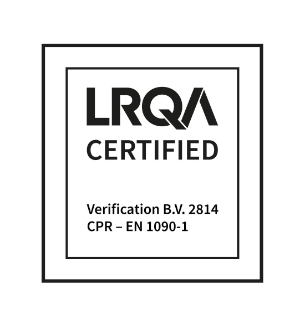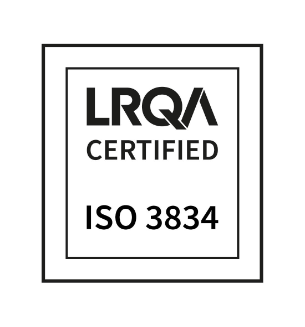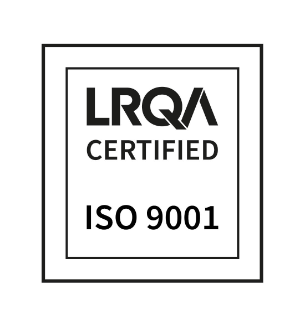Knowledge centre
10. Welding
Welding symbols are used to indicate the weld position, the type of weld and the post-processing in a clear and unambiguous manner. A good knowledge of these symbols is important both for people who sit at the computer and for people who work in production. Welding is an expensive process and accounts for a considerable portion of a product’s cost price. Consistent application of the correct standard avoids mistakes and ambiguities
- For each weld, indicate the necessary weld markings and the standard of finish.
Weld markings
Symbolic representation of welded and soldered joints on drawings as per NEN-ISO 2553.
Welding process as per NENENISO 4063. Quality level as per NENENISO 5817 and NENISO 10042. Welding position as per NENENISO 6947. Welding consumables as per NENENISO 544, ISO 2560 and ISO 3581.
Indicating welds
- Indicate the welding position with the tip of the arrow. This can be placed at any desired angle. When welding a joint where one side is to be processed first, the arrow points in the direction of the surface that has to be processed first. Fig. 10.1
- Use a continuous reference line to indicate that the joint has to be welded on the arrow side. Fig. 10.2a
- Use a dashed reference line to indicate that the joint must not be welded on the arrow side, but on the other side. Fig. 10.2b
- Place the welding symbol as shown in Fig. 10.3
Welding symbols
a = Vgroove weld
e = fillet weld
b = double Vgroove weld
f = double fillet weld
c = half Vgroove weld
g = spot weld
d = double-bevel groove weld
h = plug weld
Weld finishing
Apart from symbols for the weld, there are also symbols for the weld finishing.
A = V-groove weld, convex profile
B = double V-groove weld, ground flat
C = half Vgroove weld, ground flat
D = double-bevel groove weld with convex profile E = fillet weld with concave profile
F = double fillet weld with convex profile
Weld size inscription
-
To the right or left of the symbol, place numbers
to ensure that the weld is applied in the correct
size. For fillet welds, the symbol indicates what • the throat height is (expressed as “a” or “s”). Also indicate the length of the weld. Fig. 10.6 and Fig. 10.7
Weld marking
a = nominal throat height
s = penetration depth
z = nominal leg length
Kettinglas
l = length of the weld
e =distance between the successive welds
n = the number of welds
Guidelines for indicating welds
- Always indicate the welding position, the type of weld, and the quality standard (chain weld, fully welded, through-welding, double-sided welding) on the drawing. See also the examples above.
- Do not indicate welds for which the position of the weld is very important by means of a chain weld, but as individual welds. This lets the welders know that the position of the weld is important.
- Remember that the weld must never be smaller (less strong) than indicated.
- Bear in mind that the welder himself determines which type of weld he will make if only an arrow is indicated and not the type of welded joint.
- Clearly indicate whether welds have to be processed on both sides and what the finishing requirements are.
- Indicate areas where welding is not allowed with the text "do not weld."
Preventing distortion
Distortion is caused by strong localised heating. The heated part expands, causing pressure in the cold part. After cooling, contraction occurs in the heated part, which causes expansion in the cold part.
One way to avoid distortion is to apply a deviation in advance, so that the desired shape/size is achieved after contraction. The advantage of this method is that residual stresses remain low and no expensive clamping devices are required. A disadvantage is that it is difficult to predict the distortion in advance. Another method involves clamping the components to be joined. Fig. 10.8 The disadvantage of this is that it prevents all movement, which can lead to distortion when removing the workpiece or even cracking due to internal stresses. The machining sequence can also influence the (degree of) distortion
Buckling can be prevented by applying stiffening ribs beforehand.
- Take unwanted weld distortion into account during the design stage; limit the number of welds in the product, or avoid them altogether.
- Limit the volume of the weld. The greater the volume, the greater the distortion of the product. From a financial perspective too, it is more attractive to use smaller weld volumes
- Products that have to be welded on both sides should be welded with a large weld volume that alternates between top and bottom. This counteracts any buckling of the product caused by the application of heat. For thick sheets, use a double V-groove weld instead of a V-groove weld for this. Fig. 10.9
- Choose a favourable location for the weld. Welding on the neutral line ensures an even distribution of the contraction forces. This reduces the risk of twisting and distortion.
- Weld products evenly instead of fully welding one side first. Otherwise, there is a high probability of there being too much distortion on one side. This can be corrected by welding more on the other side first. This method is recommended especially when using tabs. Expansion can actually cause the tab to burst out of the slot.
Welded I-groove weld arrow side, weld all round. Weld lies in the middle of the set sheet metal parts. The symmetrical location of the weld ensures even expansion in the product, resulting in little distortion. Fillet weld arrow side, welded all round.
Joint types
Fillet welding
Corner to corner
Advantages:
- Good overall welding of the opening. Through-weld to the inside.
- The strongest joint (lots of filler material). Post- processing depends on the sheet thickness and customer’s finishing requirements (sometimes redundant). Easy-to-achieve result, without the need for modern techniques.
Disadvantages:
-
Distortion (depending on the sheet thickness).
Half lap
Fig. 10.12
Advantages:
- Less distortion due to less heat input. Easy processing due to one sheet touching the other (positioning).
- Often used when welding a head plate to a tube or pipe.
Disadvantages:
- No through-weld
- Appearance is less attractive, no rounded weld
- Always post-process
Full lap welding on outside
Fig. 10.13
Advantages:
-
Little distortion.
Disadvantages:
- A lot of grinding, which removes part of the weld.
- Weak joint.
- Grinding of the V-groove weld before welding can be done.
- Cannot be used on thick sheet.
Full lap welding on inside
Fig. 10.14
Advantages:
- Strong joint, but slightly weaker than corner to corner.
- Little post-processing: grinding of sharp edge on outer corner, no post-processing of inner corner.
- Little to no distortion.
- Good joining of different thicknesses.
Disadvantages
-
No through-weld, so slightly weaker.
‘Invisible’ joint
An ‘invisible’ joint, which looks like the welding of corners with a full lap, is suitable for products that have to be sprayed, ground or sanded.
Welding two sheets tightly to one another with small welds on the inside and outside results in a very small gap between the sheets. Welding the gap in only a few places reduces the post- processing time; the product exhibits no distortion, while the joint is sturdy enough. If the product is sprayed, the gap fills nicely with paint and the joint becomes completely invisible.
The weld can also be rendered invisible during post-processing by means of grinding and sanding. Note: ‘Invisible’ welding is only possible with TIG welding up to a sheet thickness of 2 mm. Also ensure that the two sheets fit perfectly to each other.
Welding leakproof joints
Fig. 10.16 To ensure that a welded tank is watertight, a double fillet weld is often used. Allowing one sheet to extend past the other enables the creation of two welds. However, the tank looks less attractive.
Welding different sheet thicknesses
- In the case of different sheet thicknesses, choose the overlap so that a square area • remains for welding.
- If the strength of the construction so requires, the inside edge can also be welded. In this case, pay attention to the contraction of the thinnest sheet.
Butt weld
Fig. 10.18
For a smooth corner finish, a butt weld is often used instead of a fillet weld. However, the preference here is to not weld at all, but instead to make the corner from a single piece. Chamfering the edges of the sheet creates a large surface area, which makes a butt weld stronger. This can be done in various ways.
Plug welding
Fig. 10.19 So-called plug welding is ideal for the application of lap welds. By making some holes in the upper sheet, the welding position is fixed. By welding the holes, the upper sheet remains flat. Post- processing is therefore unnecessary. The strength of the joint depends on the shape and dimensions of the opening.


























